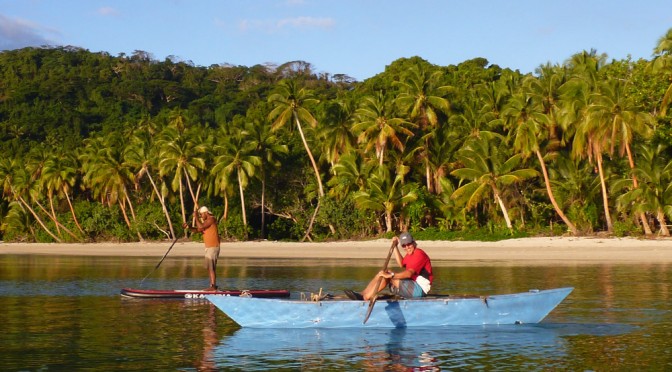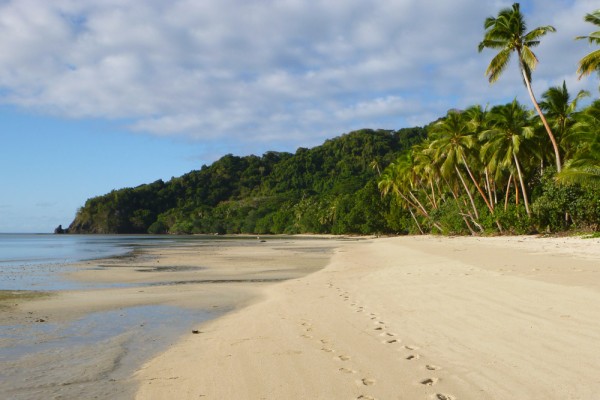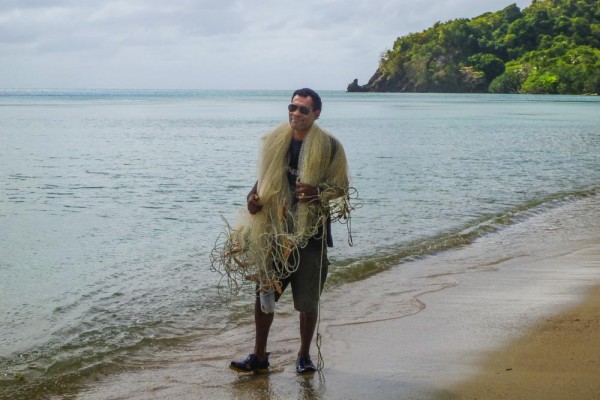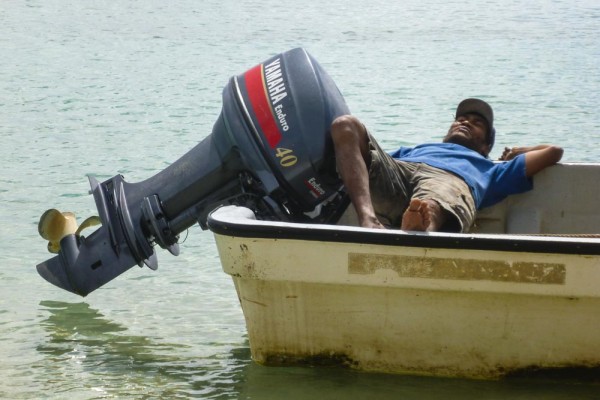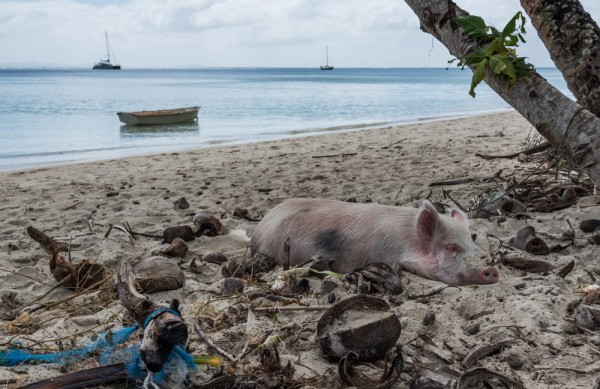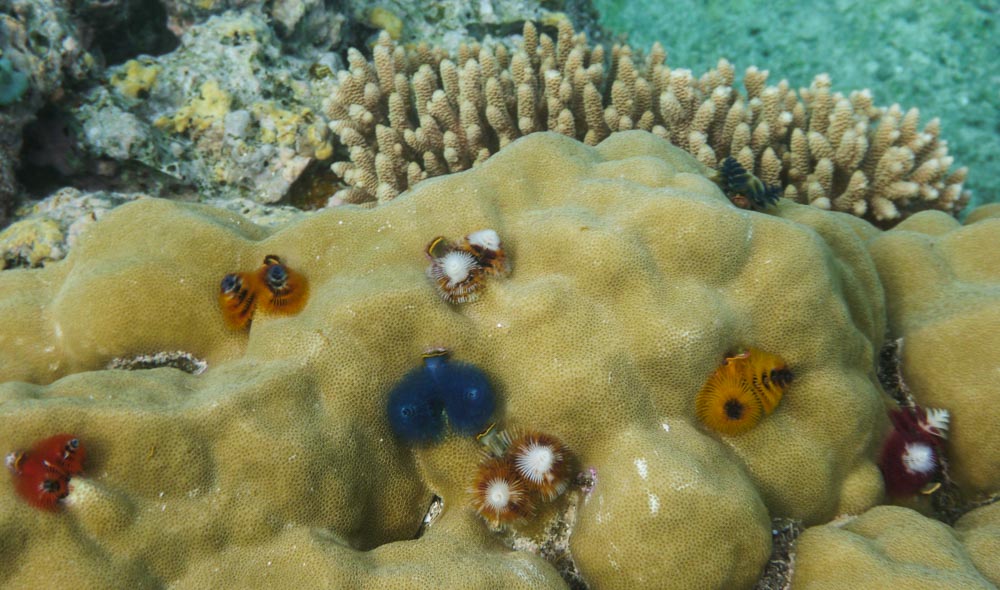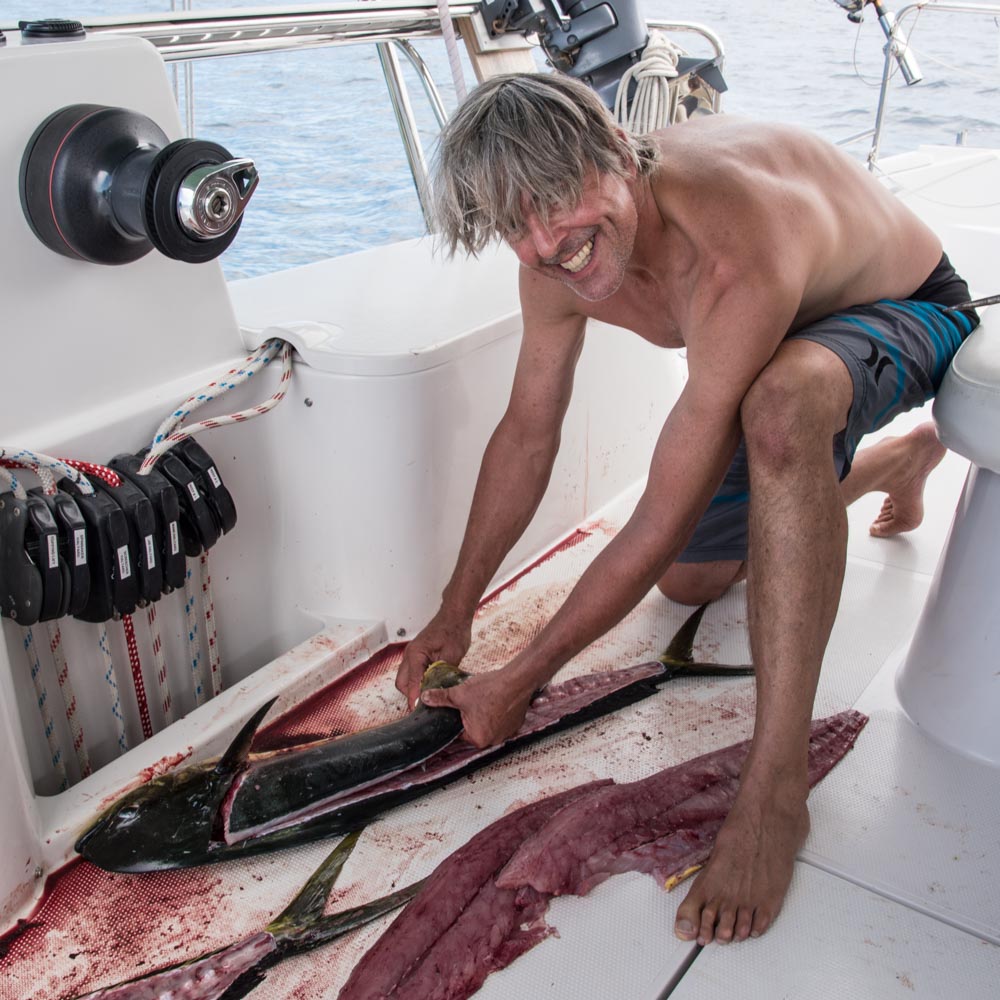We pulled our anchor from the mud bottom in Katherine Bay and sailed out with the main up and then unfurled the jib. The wind was on the beam and then behind us as we rounded the point. Then we turned north east and had it on the beam again as we ssiled to Albert Cove, on the north east corner of Rabi Island. It was gusty as the SE winds cleared the land mass but it was only 17 miles, so it only took about 2 1/2 hours.
When we arrived at Albert Cove, it did not really look like a cove. It had only a reef which did not dry at low tide protecting the white sandy beach. We took the sails down and motored through the outer reef opening and then the narrow inner reef pass and circled the bay for a shallow sandy patch. The bay shallows closer to shore with coral heads rising from the depths. Spirare had set their anchor in about 15 metres at the north-eastern end of the bay. Sergio warned us on the radio that we would find coral bottom in the shallower depths so stay further out from shore. Charts are useless in this area. We could not see the bottom because it was so deep, generally never less than 22 metres. We dropped our hook and, as we backed up, the depth went to 29 metres. We put out almost all of our 80 metres of chain. We prayed it would not drag or get it caught in coral again. We were a fair distance from shore but not far from the inner reef behind us. The land gave us some shelter from the ESE wind. We waited a while to ensure the anchor was well set before turning off the engines!
We went ashore to explore the gorgeous beach.
We met the family who lived in the shacks just a few metres from the shore. Serge advised that sevusevu was not required on Rabi Island as the residents are Banabans, not native Fijians, and don’t share the same customs. That said, we were once asked by a passing boat full of men from Nuka if we had some grog, the local word for kava, or possibly for liquor, we weren’t sure.
It seems that the families come and go from Albert Cove. From talking to Serge and Joanne, a different couple was there last year, but one old man was perhaps a consistent presence. This year, Joseph and Maria, were staying in the huts. Other men came daily in a fiberglass boat from Nuka, the main village, to gather coconuts for making copra in the ever smoldering copra shed and fishing. It seems the whole island is treated communally.
A couple pigs live in the camp, sadly tied by a thin rope on their back leg to a tree. We pleaded with Joseph to tend to one pregnant pig’s leg which was raw and festering. He untied her and she was turned loose. For her few moments of freedom, she walked into the ocean and went for a swim! Who knew that pigs like to swim? Later we saw she had been re-secured to the tree, with the rope tied tightly around the other equally scarred back leg.
We all went for a slow walk on the beautiful sand beach, lined with tall overhanging coconut palm trees. Months back, this is what we had imagined Fiji would be like! Yet, after being in Fiji for five weeks, it was the first beach Monty and I had visited! It was nice to stick our toes in sand and stretch our legs.
Beyond the beach, the shoreline became rough volanic rocky flats. Coral was trying to take hold here and there. At low tide, the salt water pools revealed lots of life, like hundreds of whispy spider-like sea stars, black sea cucumbers and some dark red fan worm.

